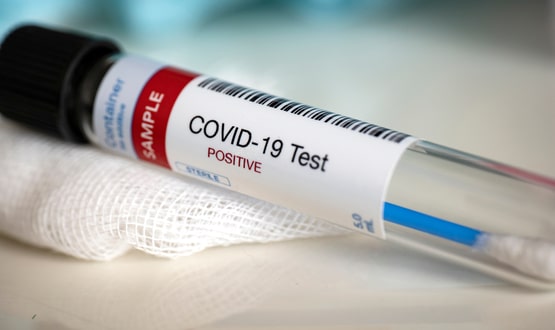Investigation launched after IT error misses thousands of Covid-19 cases
- 5 October 2020

An investigation has been launched after a “technical error” caused nearly 16,000 cases of coronavirus to go unreported.
Public Health England (PHE) confirmed that some 15,841 cases between 25 September and 2 October were left out of daily figures.
The glitch resulted in efforts to trace contacts of those who tested positive being delayed, but PHE said they have since transferred all outstanding cases to NHS Test and Trace.
Speaking in the House of Commons this afternoon (5 October) health secretary Matt Hancock said it was a “serious issue that is being investigated fully”, adding that it “should never have happened”.
Each individual who tested positive had received their test result as normal and all were advised to self-isolate. But it means those who were in close contact with them were not given appropriate advice. All outstanding cases had been transferred to contact-tracers by 1am BST on 3 October 2020, PHE confirmed.
However, as at 9am today only 51% of cases had been contacted a second time for contact-tracing purposes, Hancock told MPs. The remaining 49% were yet to be contacted by contact-tracers.
Michael Brodie, PHE interim chief, said the issue was caused by a “technical error” but a report by Press Association suggests it was caused by an Excel spreadsheet containing lab results reaching maximum size, preventing new cases from being added to the file.
As first reported by me on @PA, an Excel spreadsheet reaching its maximum size is behind the 16,000 "missing" people with Covid https://t.co/ZpKxzoT5kE
— Jane Kirby (@JanekirbyPA) October 5, 2020
Brodie said: “A technical issue was identified overnight on Friday 2 October in the data load process that transfers Covid-19 positive lab results into reporting dashboards.
“After rapid investigation, we have identified that 15,841 cases between 25 September and 2 October were not included in the reported daily Covid-19 cases. The majority of these cases occurred in most recent days.”
More than 75% (11,968) of those cases should have been reported between 30 September and 2 October, according to PHE’s statement.
“We fully understand the concern this may cause and further robust measures have been put in place as a result,” he added.
Labour’s shadow health secretary labelled the error “shambolic” adding that it was a “mess with hugely serious implications”.
The glitch means cases reported daily in the UK towards the end of last week were likely significantly higher than the near 7,000 reported.
The government’s coronavirus dashboard confirms that as of Sunday there were a further 22,961 lab-confirmed cases of Covid-19 in the UK. It brings the total to 502, 978.
A further 33 people were reported to have died of Covid-19 as of Sunday.
Susan Hopkins, Test and Trace and PHE joint medical advisor, said the error in reporting cases did not impact decisions about local action taken last week.
“All outstanding cases were immediately transferred to the contact tracing system by 1am on 3 October and a thorough public health risk assessment was undertaken to ensure outstanding cases were prioritised for contact tracing effectively,” she said.
“The advice remains the same. If you have tested positive you must self-isolate immediately for at least 10 days from when your symptoms began and we urge everyone who is contacted by NHS Test and Trace to provide details of their recent contacts.”





4 Comments
I can believe this the use of a spread sheet to do this is to be polite stupid we have integration engines and data based design to do this work who is in charge
Why on earth use a spreadsheet to do the job of a database? The NHS has IT staff familiar with databases.
If they must use a spreadsheet, use the latest one – the .xls limitations on line numbers has been known for years.
As to data cleaning, Google mad an open-source program to sort this problem out : https://openrefine.org/
The news about PHE and its use of Excel and data loss doesn’t surprise me. It was a while back in my pathology days in the late 80-90’s that I cursed and sweated over trying to integrate into PHE home made software with no concept of integration, or data standards , and based on a wetware interface. Same problem existed with the use of Access with ridiculous claims of enterprise solutions based on them, usually written by information guys and not professional IT staff. We don’t let porters do brain surgery , so why do we let poorly qualified staff do work they are not trained for.
We know the majority of labs/hospitals use HL7 v2. We don’t have a national standard for these messages but it’s still far better than CSV, Access or Excel. I wouldn’t be surprised if all these new testing labs support the same interface.
Even though this is a 20 years standard, it works, test codes, observation codes and values/units are different, it doesn’t have the issues you get with CSV.
Would be interested to know how many hours/days/weeks have been spent correcting CSV file and SFTP exports?
Comments are closed.